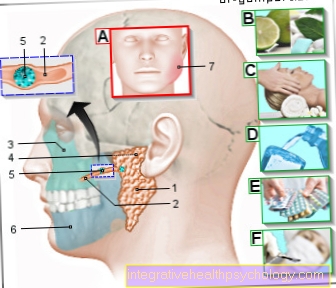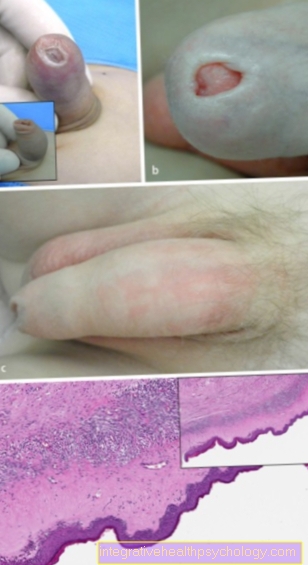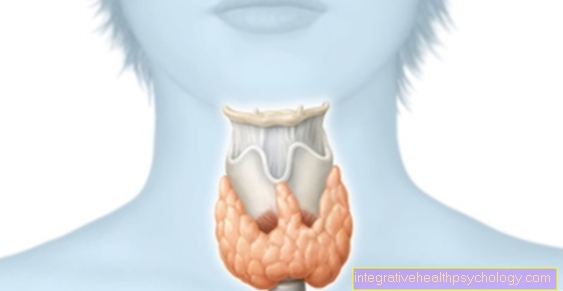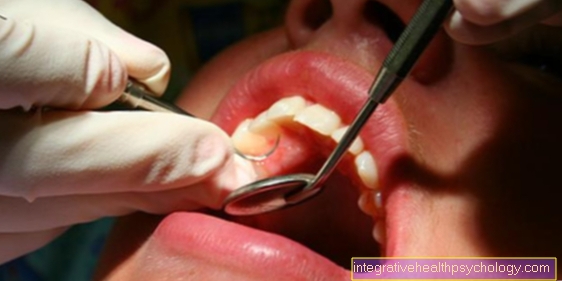Dental pain elimination
introduction
Many patients associate a visit to the dentist with a fear of pain. Of course, dental procedures such as extractions or other surgical treatments could not be performed without pain. The fear is unfounded, as the dentist has options available to carry out his treatment painlessly. Depending on the type of treatment and the location, different methods of eliminating pain (anesthesia) are used.

Surface anesthesia
Anesthesia of the mucosal surface is performed with either a cold spray or a surface anesthetic. Only the upper layers of the skin are made insensitive in order not to feel the puncture of the syringe or to open a purulent abscess if anesthesia with a syringe is not possible, as this allows germs to spread. The surface anesthesia was short-lived and quickly subsided.
Infiltration anesthesia
Infiltration or local anesthesia is administered directly to the jawbone with an anesthetic solution using a syringe under the mucous membrane. The anesthetic leads to local anesthesia of the encapsulated tooth and its surroundings. The areas of application for this type of pain prevention are:
- Tooth extractions
- Periodontal interventions
- Grinding of teeth to accommodate a crown
- Pain-free cavity preparation
- Inflammatory Pulp Removal (Vital extirpation)
- Implants
Due to the slow degradation of the anesthetic, the anesthesia lasts for several hours. The decay of the effect is prolonged by the addition of vascular-contracting additives, which also reduce the bleeding tendency.
Conduction anesthesia
Local anesthesia cannot be used for the posterior area to eliminate pain in the lower jaw, as the bone is too compact to allow the anesthetic solution to pass through. Conduction anesthesia is necessary here. To turn off the nerve it is necessary to hit it at its entry point into the lower jaw. This opening is located in the ascending branch of the lower jaw behind the last molars. This type of anesthesia is much more difficult for the dentist to perform. Since the nerve supplying the lower jaw is numbed at its entry point, the entire lower jaw on the relevant side is switched off. The patient notices it from a feeling of numb skin on the lower lip, as the nerve emerges from the bone in the area of the small molars.
Intraligamental anesthesia
Intraligamental anesthesia is a special form of anesthesia. Here, the anesthetic is applied directly into the gap between the tooth and the jawbone with pressure. The advantage is that only one tooth is anesthetized and that a much smaller amount of the anesthetic is used. Since the gap is very narrow, a very thin cannula is used for this type of anesthesia.
anesthesia
For particularly sensitive patients who are also afraid of injections or for particularly large surgical procedures, anesthesia may also be necessary. However, the risk of general anesthesia must be taken into account here. Therefore, an anesthetist should always perform this type of pain elimination.
You can also find detailed information under:
- Anesthesia at the dentist
- General anesthesia for a wisdom tooth operation
Summary
Going to the dentist need not be associated with fear of pain. There are enough procedures available to the dentist to avoid pain. Anesthesia should only be administered in exceptional cases, because the local anesthesia is sufficient in most cases to eliminate pain.





























